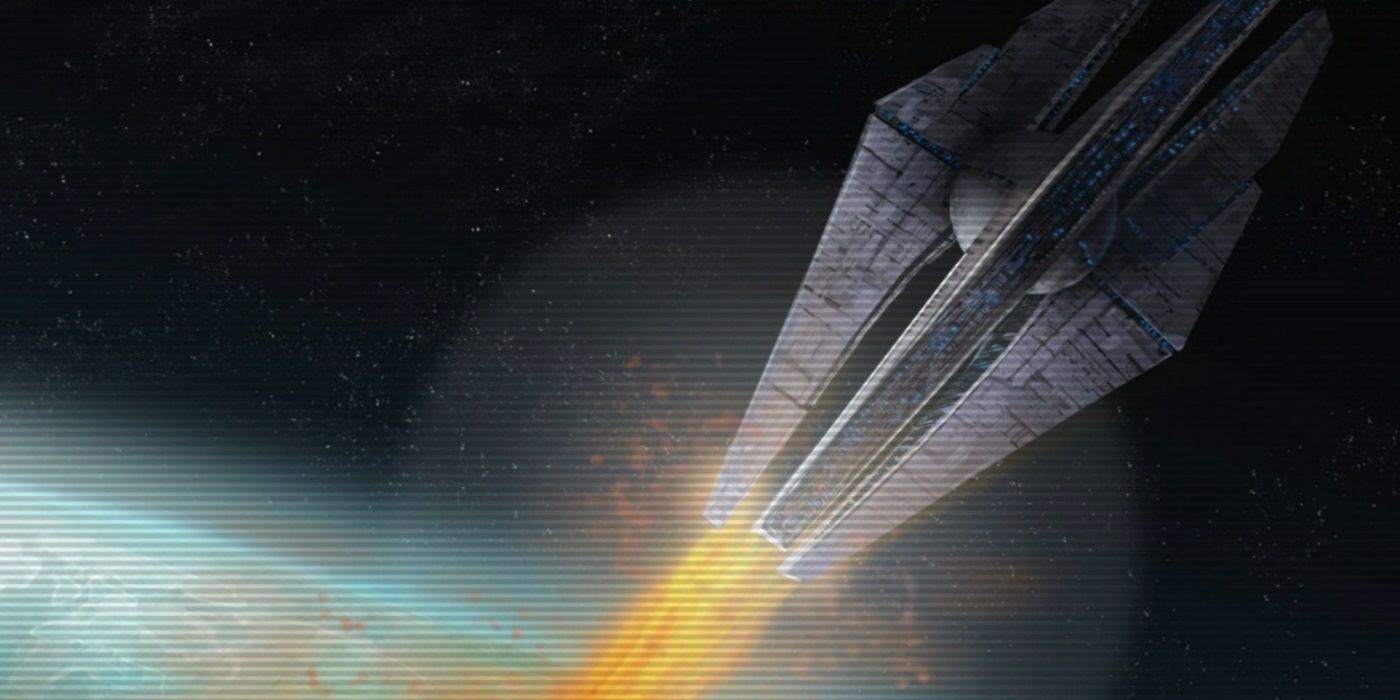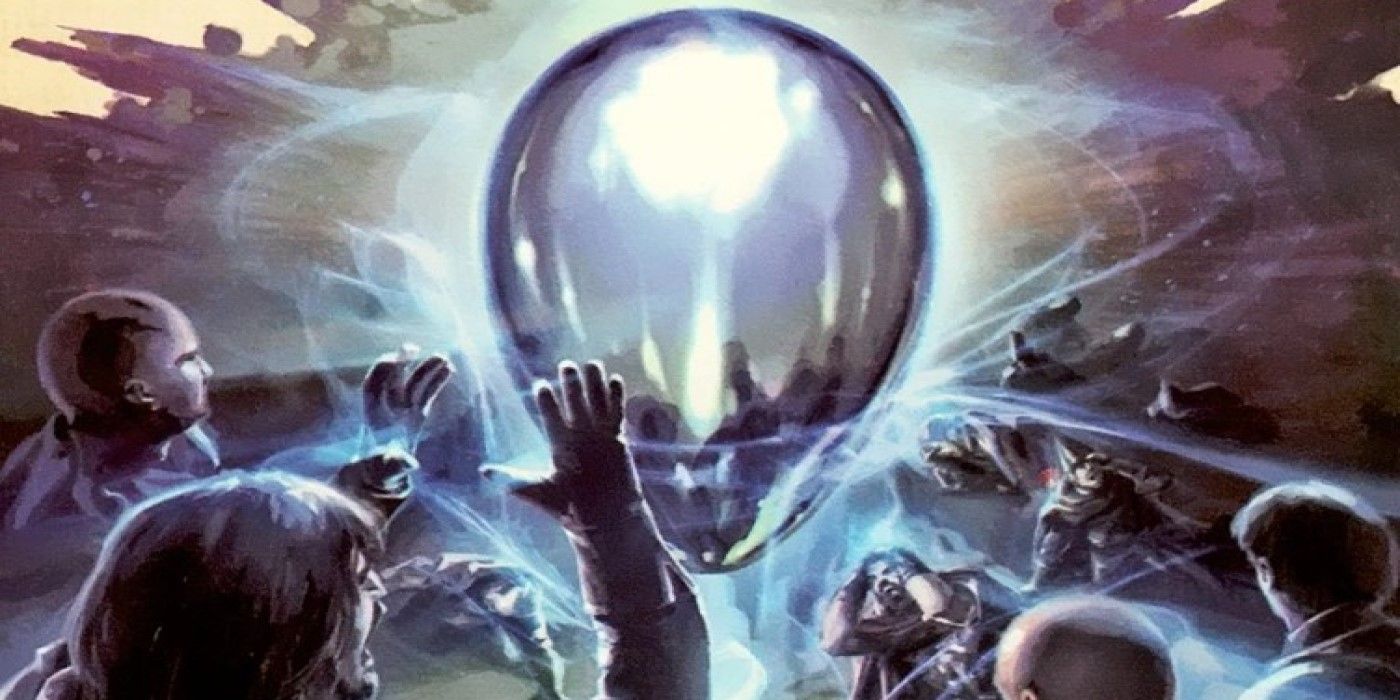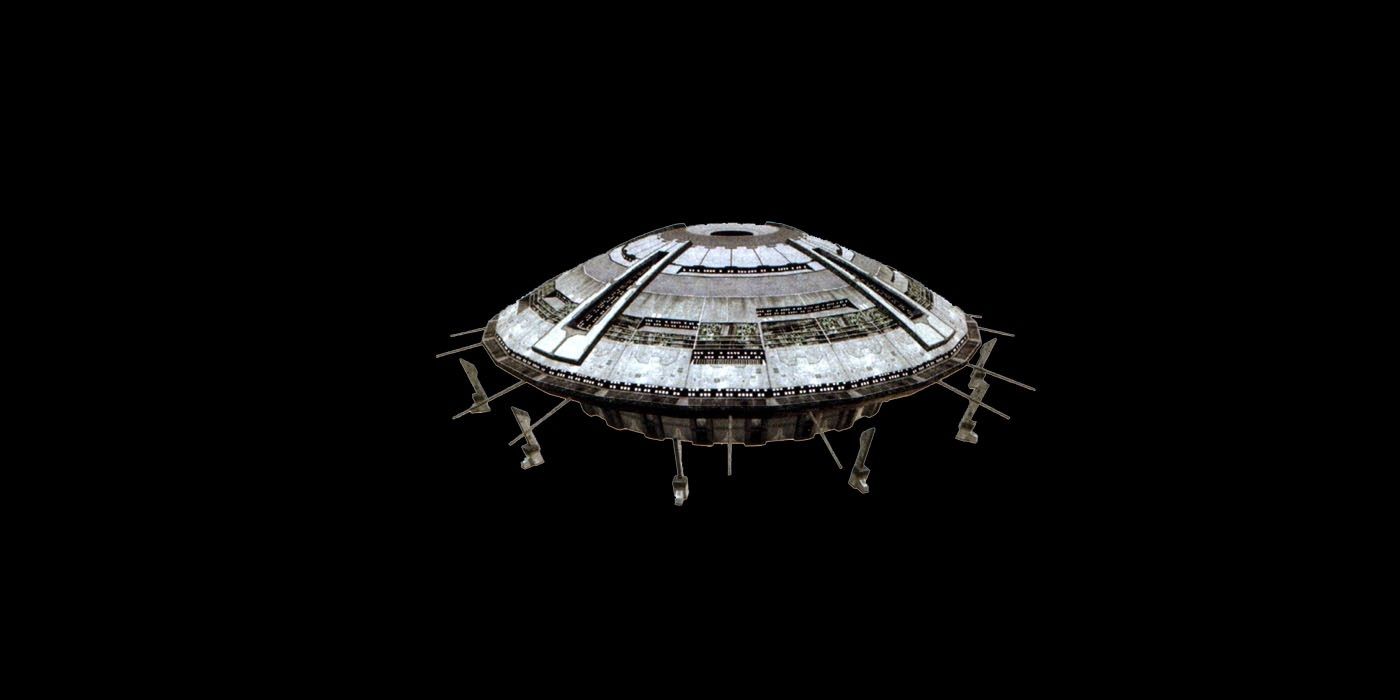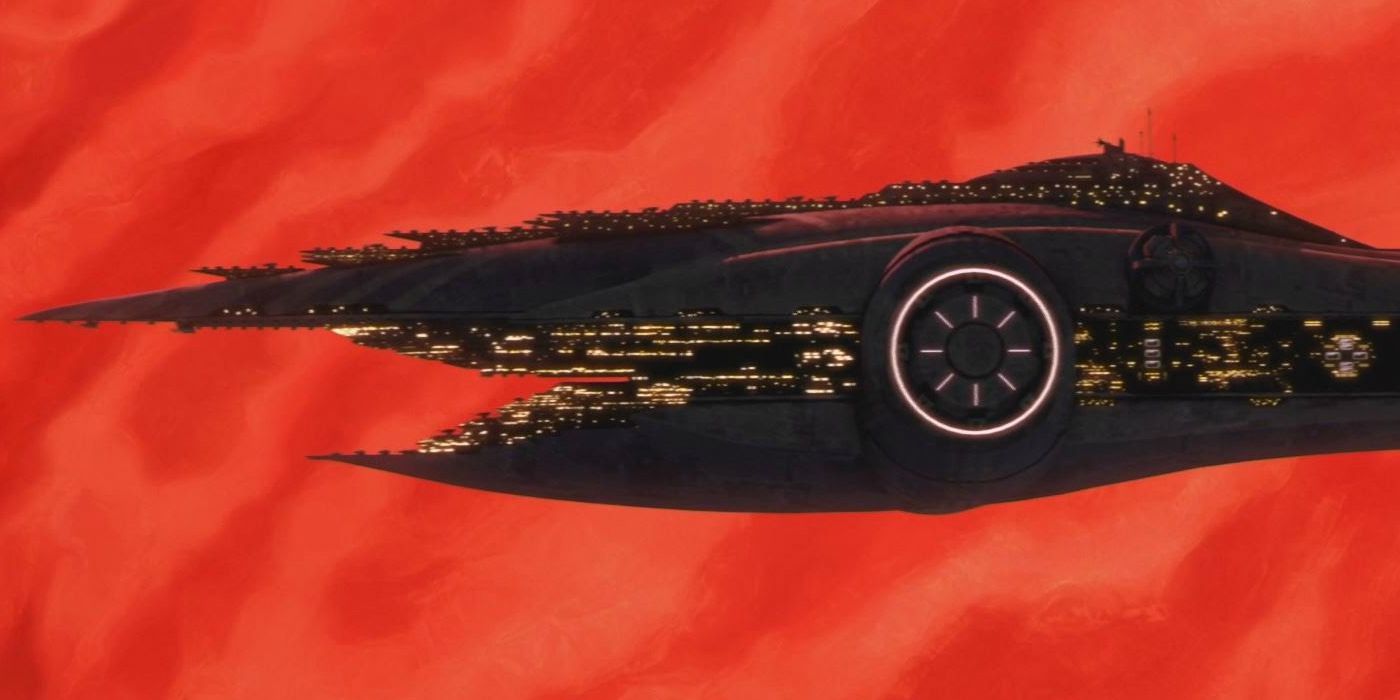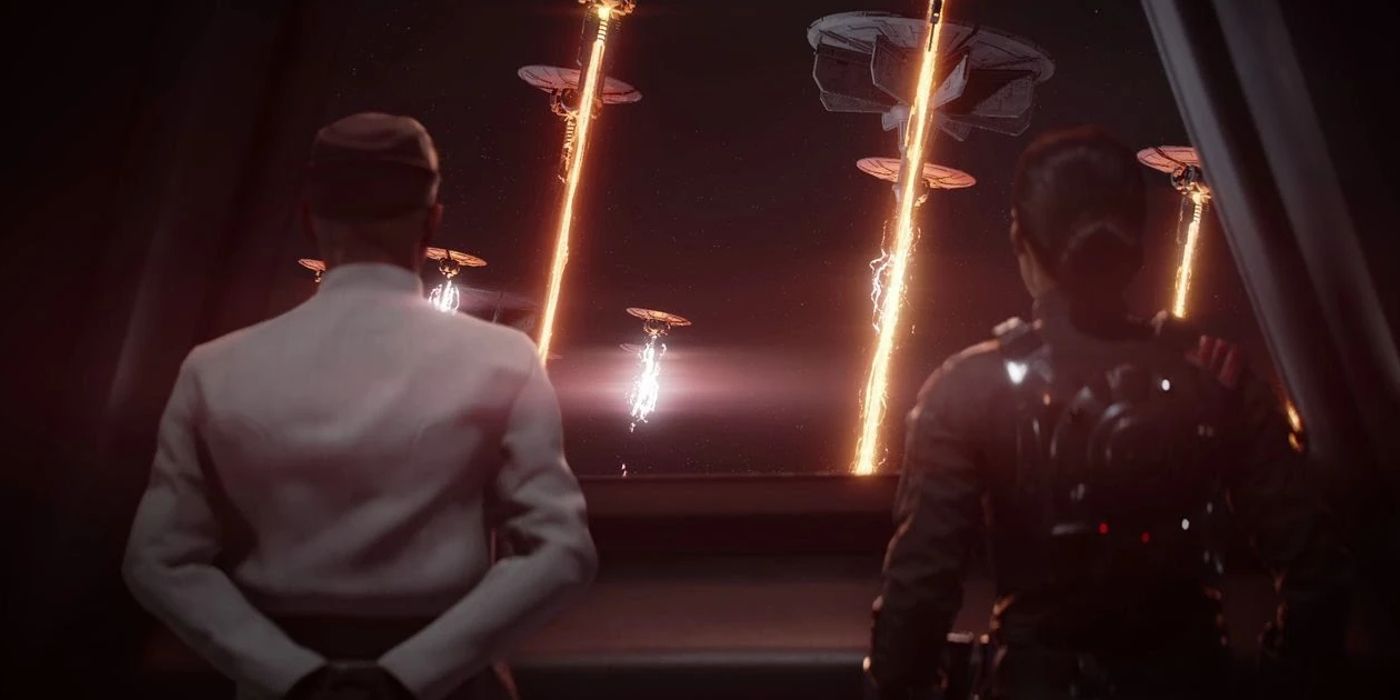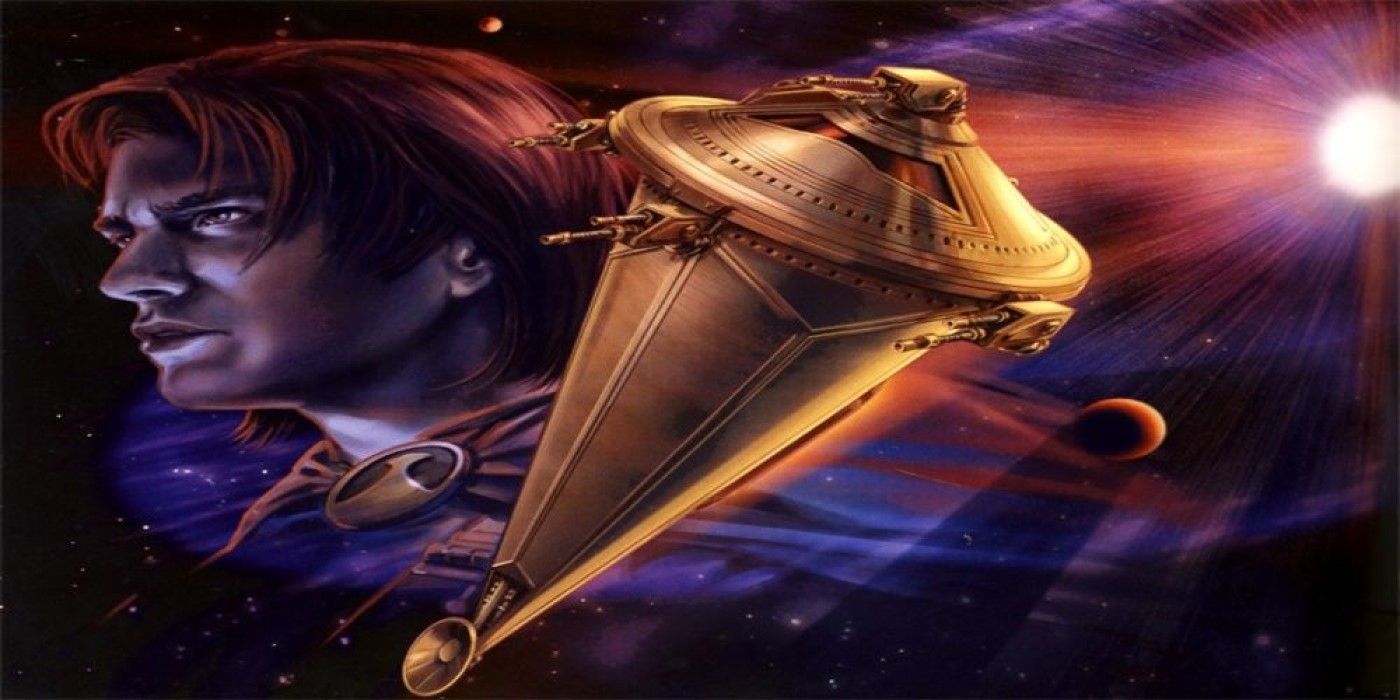
10 Star Wars Superweapons That Should Have Conquered The Galaxy
Summary
-
Superweapons across
Star Wars
history failed due to overlooked design weaknesses, exemplified by the Death Star’s fatal vulnerability. -
Despite immense power, several
Star Wars
superweapons, from the Sith era to the First Order, were destroyed due to exploitable flaws. - The Final Order’s planet-killing Star Destroyers showcased unmatched firepower but failed due to navigational limitations and attack vulnerabilities.
Since the first Star Wars movie came out in 1977, every subsequent story has attempted to raise the stakes from the last by introducing a new superweapon, most of which failed miserably. There’s no denying the damage caused by destructive Star Wars superweapons, erasing entire planets in the blink of an eye and taking out a whole fleet of ships. The third act of most Star Wars movies is always heightened by the heroes struggling to overcome impossible odds by destroying a space station or powerful weapon.
While many Star Wars superweapons were so destructive that they should have easily conquered the galaxy, Han Solo best explained why they often fell short in the Legends novel Star Wars: The New Jedi Order – Destiny’s Way by Walter Jon Williams:
“What the Empire would have done was build a super-colossal Yuuzhan Vong-killing battle machine. They would have called it the Nova Colossus or the Galaxy Destructor or the Nostril of Palpatine or something equally grandiose. They would have spent billions of credits, employed thousands of contractors and subcontractors, and equipped it with the latest in death-dealing technology. And you know what would have happened? It wouldn’t have worked. They’d forget to bolt down a metal plate over an access hatch leading to the main reactors or some other mistake and a hotshot enemy pilot would have dropped a bomb down there and blow the whole thing up. Now that’s what the Empire would have done.”
This comically summarizes the weakness of any superweapon: it may be enormous with infinite resources, but there will always be a weakness its designers missed. 10 Star Wars superweapons fell victim to this flaw in canon and Legends, failing their builders instead of conquering the galaxy.
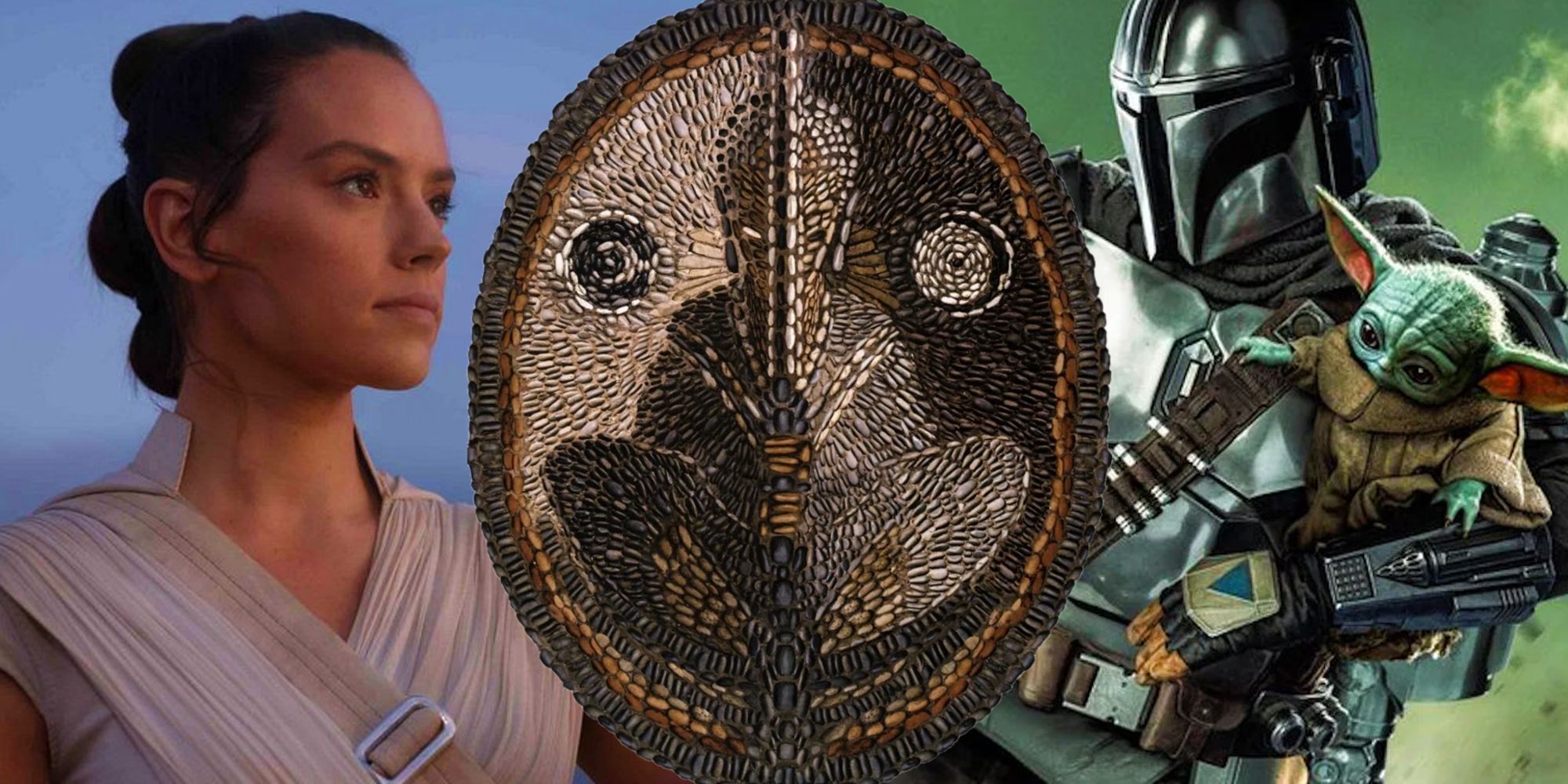
New Star Wars Movies: Every Upcoming Movie & Release Date
Here’s every upcoming Star Wars movie in development – including Rey’s New Jedi Order, the Dawn of the Jedi, and The Mandalorian & Grogu!
10 The Star Forge
Star Wars: Knights of the Old Republic (Legends)
Constructed by the Rakatan Infinite Empire in 30,000 BBY, the Star Force was a massive battle station that drew power from a nearby star to produce ships and droids rapidly. The weapon was also combined with the power of the Force and corrupted by the dark side, granting the Rakata great strength at a terrible cost. After the collapse of the Rakatan Empire, the Star Force was abandoned in orbit of Lehon, with its structural integrity preserving the station for tens of thousands of years.
Darth Malak eventually seized the Star Force for himself and used its power to wage war against the Old Republic. However, his former master, Darth Revan, had joined forces with the Jedi and defeated Malak in combat. The Republic fleet seized the chance to target the station’s orbital stabilizers, causing the Star Forge to explode and fall into the star that powered it.
9 The Thought Bomb
Star Wars: Darth Bane – Path of Destruction & Star Wars: Jedi vs. Sith (Legends)
The thought bomb was a Force ritual requiring several Sith Lords that focused the power of the dark side. It was meant to eradicate every Force-sensitive lifeform caught in its blast radius, forever trapping their souls in a swirling vortex. Kaan’s Brotherhood of Darkness planned to use the thought bomb to defeat Jedi Master Hoth’s Army of Light during the Battle of Ruusan in 1032 BBY.
Unfortunately for the Sith, they had been deceived by Darth Bane, who told them about the thought bomb. He promised it would kill the Jedi, but when the Sith set off the bomb, everyone caught in the vicinity was killed. Most of the Sith were destroyed at once, leaving Bane as the sole survivor and allowing him to create the Rule of Two.
The souls trapped by the thought bomb were eventually set free by Kyle Katarn in Star Wars: Jedi Knight – Dark Forces II.
8 The Dark Reaper
Star Wars: The Clone Wars 2002 video game (Legends)
As the Star Forge drew power from a star, the Dark Reaper used a Force Harvester to draw power from the Living Force. It was created by the Sith and used against the Jedi in the Great Hyperspace War and the Great Sith War, defeated when former Jedi Ulic Qel-Droma betrayed the Sith and told the Jedi how to target the Force Harvester.
Count Dooku rediscovered the Dark Reaper on Raxus Prime during the first month of the Clone Wars and planned to use it against the Republic. Anakin Skywalker found Qel-Droma’s tomb and contacted his spirit through the Force, learning how to harness the Force around him to make himself immune to the Force Harvester. This allowed Anakin to approach the Force Harvester in a tank and blast it to pieces, though it also set him further on his path to the dark side.
7 The Malevolence
Star Wars: The Clone Wars season 1, episodes 2-4
Rather than having a laser cannon, the Malevolence was a Separatist ion cannon designed to shut down power on enemy ships and leave them defenseless against conventional fire. Count Dooku and General Grievous destroyed Jedi Master Plo Koon’s fleet and any other ships that came looking for answers. Droid squads were sent to find survivors in the wreckage to ensure the Republic wouldn’t learn of the Malevolence.
Even so, the Republic did learn of the Separatist weapon when Anakin Skywalker and Ahsoka Tano rescued Plo Koon and delivered their report to the Jedi Council. Anakin led a squadron of Y-wing bombers to slip past the ion blast and target the canon directly, taking out the weapon and leaving the ship vulnerable. The Jedi then snuck onboard and reprogrammed the nav computer to send the Malevolence directly into a moon when it tried to jump into hyperspace.
6 The Malachor Superweapon
Star Wars Rebels season 2, episodes 21-22 “Twilight of the Apprentice”
The temple on Malachor was another superweapon built by the Sith in ancient times, a battle station that could only be activated by a Sith holocron. It was powered by a giant kyber crystal and fired a massive energy beam, scorching everything in its path and petrifying living beings. Star Wars: The Rise of Skywalker – The Visual Dictionary by Pablo Hidalgo confirms that this kyber weaponry was developed by Darth Tanis in 3966 BBY.
Like all the Sith weapons that preceded it, the Malachor superweapon was prevented from taking off when Jedi Knights attacked the temple. The kyber weapon was activated during the battle and scorched everything on the surface, killing Jedi and Sith alike and preserving them in ash. The temple would be abandoned for thousands of years until it was nearly activated by the former Sith Lord Maul.
5 The Death Star
Star Wars (1977)
The Death Star is Star Wars‘s first and most iconic superweapon, though it was not the first of its kind. Like the Malachor superweapon, the Death Star’s energy was focused by a giant kyber crystal, channeling its lasers into a single point to create a devastating blast. Emperor Palpatine had the Death Star built in secret for almost 20 years, waiting patiently for the day the weapon would be completed and any rebellion could be crushed instantly.
With the Force on his side, Luke Skywalker was able to target a small thermal exhaust port, instantly destroying a station that had taken the Empire two decades to complete.
However, Palpatine did not consider the possibility of sabotage, and the Death Star was given a fatal weakness by the man who designed the weapon, Galen Erso. He pretended to work for the Empire after they killed his wife, but he laid the groundwork for his revenge, telling the Rebel Alliance exactly where to obtain the plans. With the Force on his side, Luke Skywalker was able to target a small thermal exhaust port, instantly destroying a station that had taken the Empire two decades to complete. Even so, it wouldn’t be the last superweapon built at Palpatine’s command.
4 Climate Disruption Array (Operation: Cinder)
Star Wars: Battlefront II (2017) and Star Wars: Shattered Empire
After the Empire’s second failed attempt to destroy the Rebellion with a Death Star, the Empire put “Operation: Cinder” into effect as part of Palpatine’s contingency in the event of his death. The Empire would punish all worlds loyal or sympathetic to the Rebellion by targeting planets with a series of climate disruption arrays, which would cause storms and hurricanes to devastate the population. Worlds such as Vardos, Naboo, and Burnin Konn were all targeted during Operation: Cinder, with some worlds being destroyed entirely.
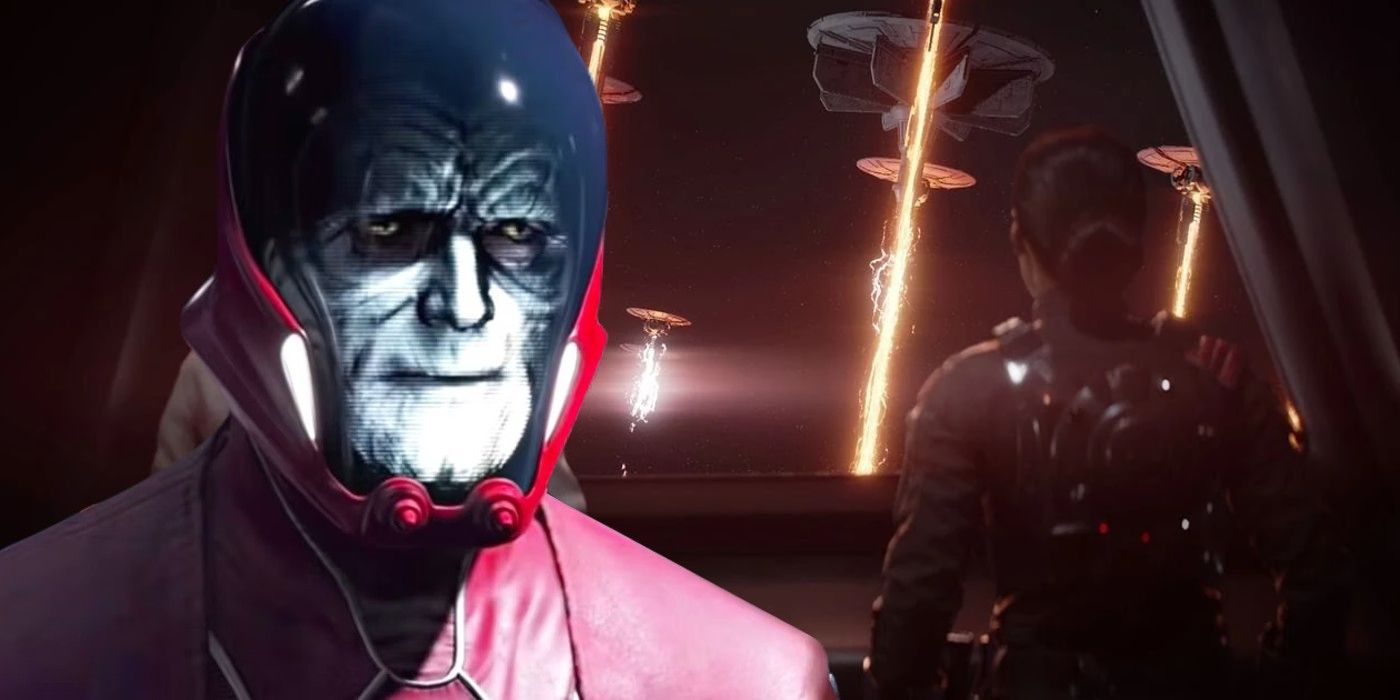
The Death Star Was Only The Beginning: All 12 Planets Devastated By The Empire’s Operation Cinder
Operation: Cinder was one of the most savage attacks the Empire ever carried out against many planets, even more brutal than the Death Star.
While this was meant to intimidate the galaxy into remaining loyal to the Empire, it also had the opposite effect. Many worlds rallied behind the New Republic in response to Operation: Cinder, and some Imperials turned against the Empire, including Iden Versio and Del Meeko of Inferno Squad. The New Republic was eventually able to destroy all the arrays, but no one could have suspected that Palpatine had survived his apparent death. Operation: Cinder was part of his real plan to end the Empire that had failed its Emperor and build something better in the Unknown Regions.
3 The Sun Crusher
The Jedi Academy trilogy (Legends)
Developed at the Imperial Maw Installation in the Legends timeline, the Sun Crusher had more destructive potential than any superweapon that preceded it. The Sun Crusher could destroy an entire solar system by turning its sun into a supernova, unlike most Sith or Imperial superweapons that targeted individual planets. It was also nearly indestructible, surviving a partial blow from a Death Star prototype, making it almost impossible to stop.
The Sun Crusher was later stolen by Kyp Durron, one of Luke Skywalker’s Jedi students who fell under the influence of Exar Kun, a Sith Lord whose spirit had remained on Yavin 4 for thousands of years. Kyp hated the Empire for selling him into slavery and used the Sun Crusher to destroy the Carida system and other Imperial targets. When Exar Kun’s spirit was defeated, Kyp redeemed himself by sending the Sun Crusher into a black hole to ensure the Imperial Remnant would never use it.
2 Starkiller Base
Star Wars: Episode VII – The Force Awakens
Even after both Death Stars failed, the First Order attempted to finish what the Empire started by turning the planet Ilum into a hyper-lightspeed weapon. This meant that Starkiller Base could target multiple planets across the galaxy, unlike the Death Stars, which had to travel to their destination. The weapon was powered by draining a nearby star, similar to the Star Forge in the Legends continuity.
Although Starkiller Base was more massive and capable of destroying more targets, it had the same weakness as the Death Star. Han Solo, Finn, and Chewbacca snuck into the base and lowered the shields so the Resistance could target the weapon’s weak spot, just like at the Battle of Endor. This made the First Order realize the benefits of range and power over concentrating resources in one superweapon, but their solution came at a cost.
1 The Final Order
Star Wars: The Rise of Skywalker
While the galaxy was plunged into war, Palpatine chose to reveal himself and prepare the Final Order, a fleet of 10,000 Star Destroyers equipped with planet-killing laser cannons. Palpatine had the ultimate advantage with his new fleet: nobody knew its location, each ship had the same destructive firepower as a Death Star, and they could be spread across the galaxy. When the First Order combined with the Final Order, it would “…be the final word in the story of rebellion.”
Of course, the Final Order fleet had the most glaring weakness yet. None of the ships could take off without guidance from the lead Star Destroyer, their cannons were highly vulnerable to attack, and the Resistance found Exegol thanks to Palpatine’s message. Despite having more firepower than any army the universe had ever seen, the Final Order failed, the last of many Star Wars weapons that should have conquered the galaxy.

